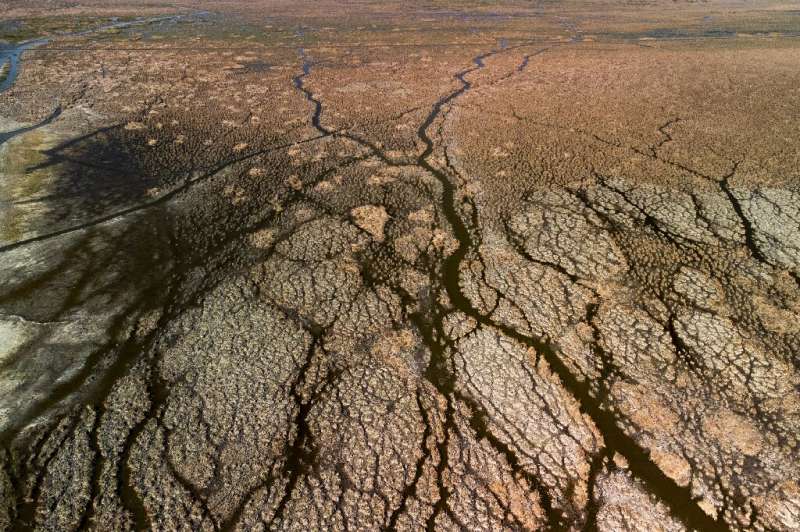
The marshlands have shrunk from 20,000 square kilometers (7,700 square miles) in the early 1990s to 4,000 (1,500 square miles) by latest estimates—choked by dams on the great rivers upstream in Turkey and Syria and the soaring temperatures of climate change. Only a few thousand of the quarter million Ma’adan who lived in the marshes in the early 1990s remain.
Both the Mesopotamian marshes, and the culture of the Marsh Arabs—or Ma’adan—have UNESCO world heritage status. The Ma’adan have hunted and fished there for 5,000 years, building houses from woven reeds on floating reed islands where the Tigris and Euphrates rivers come together before pouring into the Gulf.
Even their beautifully intricate mosques were made of reeds.
AFP crisscrossed the central Chibayish marshes at the end of June, where at dawn it was already 35 degrees Centigrade (95 degrees Fahrenheit) before temperatures shot towards 50.
“The level of the Euphrates in Iraq is around half of what it was in the 1970s,” said Ali al-Quraishi, of Baghdad’s University of Technology.
Dams upstream in Turkey, where the Tigris and the Euphrates have their sources, and others on their tributaries in Syria and Iran, are the “principle” cause, he said.
“The Turks have built more dams to meet the needs of agriculture there. As the population rises, more water is needed for irrigation and domestic use,” the expert added.
Pollution is also rising alongside salination. Sewers, pesticides and waste from factories and hospitals are dumped directly into the Euphrates along its course, and much of it ends up in the marshes, said Nadheer Fazaa, of Baghdad University, and a specialist on climate change.
“We have analyzed the water and found numerous pollutants like heavy metals” which cause illness, the scientist said.